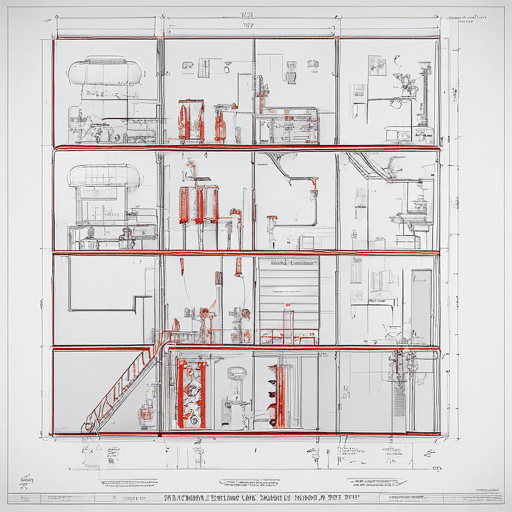Opening a Dispensary in California The staggering figure of anticipated annual growth in the cannabis industry of $50 Billion a

A fire sprinkler system is the major requirement that is responsible for the safety and protection of residents and their properties or valuable assets from unexpected fire attacks. These sprinkler systems design is among the major supports to fire safety for all types of buildings including workplaces, bureaus, warehouses, flats, retail stores, storerooms, and so on. In California, the government made it obligatory to install the fire sprinkler systems by following predetermined principles and codes to avoid any future loss. The sudden fire attacks may cause great damage to life and the property in both commercial and residential buildings. Therefore, the installation of a fire sprinkler system in commercial, as well as residential buildings, is compulsory to save the lives of occupants and to protect their assets and belongings. The fire sprinkler system design consists of various predetermined codes and guidelines which are necessary to follow before installing the fire sprinkler system. In this article, we will discuss the fire sprinkler system design and its various components.
Introduction
Fire Safety is the most important concern from occupants, and directors to property holders to protect their lives, possessions, properties, and assets from being lost. A sudden temperature rise can cause an excessive loss and damage to the lives of residents and their properties. It may damage properties, histories, merchandise, and expensive home accessories including electronic items. Fire Sprinkler system design is considered a necessary requirement for both residential and commercial establishments. It plays a crucial role in protecting the people from sudden fire attacks. The main element in a fire sprinkler system design is a fire sprinkler, which is accountable to discharge water when it detects the unexpected rise in temperature which may cause the fire attack.
Components of Fire Sprinkler System Design
Fire Sprinkler System Design requires skill, expertise, and thorough planning. Installing a Fire sprinkler system in homes and commercial structures can save more than billions of lives and properties. Careful planning and design are some of the most significant things that must be considered while designing a fire sprinkler system. When a sudden fire blows up, sprinkler systems are responsible to handle the blaze or intensity of fire by cooling the surfaces to prevent the explosion in a room or a particular area when it reaches excessive temperature. In California, the fire sprinkler system design is obligatory to install in both residential and commercial structures to prevent the loss of property and the lives of the residents. Here, we will discuss the stages of fire sprinkler system design including:
Fire Sprinkler System Design
The quantity of water required to overcome a fire is based on several factors, such as the range of area under fire and the sort of inflammatory substance or fuel causing the fire to rise. To assist designers in planning system designs that can produce adequate water sprinkle flow and pressure, three theoretical instruments are considered. These are Occupancy hazards, design space, and density or area contour.
Structures or portions of structures are grouped into occupancy hazards by the NFPA 13. This assists the designers to calculate the fuel bundle and hence the amount of water required. The determination of the occupancy hazard depends on various factors demonstrated in the NFPA 13. The hazard classification of NFPA 13 is as follows:
Occupancy Hazard
The design space perception enables designers to choose a worst-case-outline part of their structure to plan the complete system over. The “worst-case-outline” is referred to as hydraulics with the hazard level. The design system space is a hydraulically intriguing and challenging location, generally, due to high altitude and/or how much far it is from the fire sprinkler riser. The design space perception is utilized because it is improbable to supply water to every fire sprinkler in the meantime.
It is not always simple and easy to recognize a design space, therefore design layout specialists usually carry out calculations for various spaces to get to the one with the greatest requirement. There are certain rules for the selection of the design space in the NFPA 13.
To find out the water requirement for the density or area contour, the designers come upon the occupancy hazard level and the design space. This quantity of water is referred to as water density which is gallons per minute per square foot (GPM/ft2). The designer can utilize the density-area contour provided by the NFPA 13 to find out the accurate required water density, once they come to know about the hazard level of their structure and the size of the design space.
Conclusion
By concluding the article, it is cleared that the fire sprinkler systems play a crucial role in protecting the lives and the belongings of the occupants. Fire sprinkler system design is the most significant concern nowadays. In California, it is obligatory to install fire sprinkler systems in homes and workplaces to avoid future consequences.
About Author
InnoDez